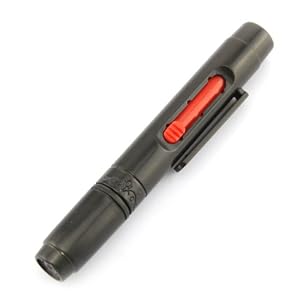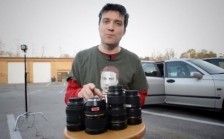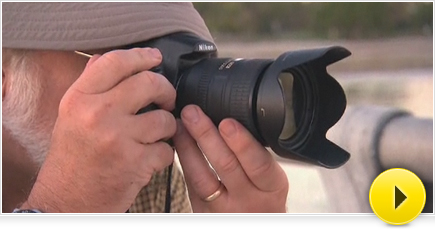
best lens for blackmagic camera image

Andrew
Answer
If there was such a thing, the professionals would already be using them... because they are professionals, they don't like to spend money unless they have to and that translates into more money in their pocket not tied up purchasing equipment.
Since camcorders can range from low end consumer cams at about $50 to high end pro gear at $80,000 and more, and we assume you already have audio (mics, cables/wireless), lighting (on camera or on trees/trusses), steadying devices (tripod, vest system with articulated counterbalanced arm, camera crane, etc.) and know how to edit the video and use color correction and all the various tools that come with good editors - and a computer that can deal with high definition video editing effectively, we can focus on the camcorder or camera itself... and you have not provided enough information.
Any camcorder - provided there is enough light and it is used properly - can provide "stunning" video. Generally, no fast action, normal levels of audio and never used handheld. We assume the subject is the important parts - and the editing and the rendering is done well. As camcorders increase in price, lenses get bigger, imaging chips get bigger, video compression can go down and manual audio controls are used properly. At the lowest end of useful "cheapish" camcorders will be the prosumers. A little over $1,000 with a 58mm lens diameter and smallish imaging chip. Then the entry pro-grade with 67mm lens diameter or larger and larger imaging chip or 3-chip array in the $3,000 range. The Sony HDR-FX1000 and NEX-EA50UH are examples (I have both). At the low end, it is possible that a GoPro Hero action cam, or any of the consumer cams from Sony, Panasonic, Canon (I like the HF R400) could be useful.
A newish family of camcorders like the Canon EOS C100/C300/C500, Blackmagic Design Cinema Cam, Sony NEX-VG and NEX-EA series and Panasonic AG-AC100 and above are doing some cool work with skilled folks using them...
And we have not hit "expensive" yet... that would be Red or Silicon Imaging or the higher end Sony CineAlta or Panasonic Varicam gear among others.
All the above record to some sort of digital format - there is no "film" involved. If you need film, then use of a film camera (See Panavision and Arri - among others) is needed. Or something vintage from the 8mm film days (no audio capture).
Video editing software for speeding up videos and adding music?

Evie
Hi
Well the title pretty much says it all lol. I have been normally been using Windows Movie Maker but lately it has been very, VERY annoying. So I was wondering if there was any free software that will let me take a clip speed it up and put music to it?
Thanks. :)
Answer
The best software for you is SONY Vegas Pro 9.0 Build 563 it can do it all.
Here is the link for download :
http://www.softpedia.com/get/Multimedia/Video/Video-Editors/SONY-Vegas.shtml
SONY Vegas Pro description
Combines real-time SD, DV and HDV video editing with unrivaled audio tools to provide the ultimate all-in-one environment
Only Vegas software combines real-time SD, DV, and HDV video editing with unrivaled audio tools to provide the ultimate all-in-one environment for creative professionals - high-definition and high-fidelity.
With its unique, visual approach to digital video and audio production, Vegas will deliver tremendous power, incredible speed and maximum productivity in an efficient and uncomplicated platform.
Powerful video editing
Expertly edit complex long-form SD or HD projects using mouse or keyboard trimming along with powerful ripple editing modes. Video editing enhancements in Vegas 6 include A/V synchronization detect and repair, tape-style audio scrubbing, drag ripple and arrange, source project editing, and auto-frame quantization.
Multitrack video editing on unlimited tracks
There is no limit to the number of video and audio tracks you can use in a Vegas project - nothing to impede your creativity or stop you from reaching your fullest potential.
Resolution independent
Vegas software supports any Aspect Ratio (4:3, 16:9, etc.). Edit on 23.976, native 24, 25, 29.97 or 30 fps timelines. Use video in different sizes and frame-rates all on the same project or on the same track - no conversion is necessary. Render Vegas projects out to just about any resolution.
Powerful color correction and matching tools
Use 3-Wheel Primary and comprehensive Secondary Color Correction filters to adjust differences in video from different camera setups or lighting situations; enhance dull, washed out footage; or make specific color ranges stand out. All edits can instantly be analyzed on four scopes: Vectorscope, Waveform, Parade and Histogram. Changes are immediately viewable on an external monitor via i.LINK connector/IEEE-1394 devices.
Vectorscope, waveform, histogram, and parade video scopes
Accurately measure the color, black and whites of video, and locate illegal chroma and luma levels so you can fix them prior to output. View levels in real-time as they play back in the preview window or on an external monitor.
HDV Support
Capture from a wide variety of HDV devices. Includes support for 601/709 color spaces and the CineForm intermediate codec for high performance HDV editing. Superior frame rate conversion including 24p, and precision upconversion for HD-SDI mastering. Export your HDV projects to delivery formats including Windows Media 9 HD, Real Media, QuickTime, and the Sony YUV codec for HD-SDI output.
SD/HD-SDI Support
New support for Blackmagic Design DeckLink boards allows you to capture, edit, monitor, and print-to-tape using SDI (serial digital interface) and component SD and HD decks.
Professional video effects
Choose from over 190 customizable video effects including: Lens Flares, Light Rays, Film Effects, Chroma Key, Timecode Overlays, Color Gradients, Media Generators, Credit Rolls, Text Effects and more. Quickly recall frequently used effects chains with new configurable packages.
Customizable video transitions
Use over 175 2D and 3D real-time transitions, including Barndoor, Clock Wipe, Dissolves, Iris, Linear Wipes, Page Peels, Venetian Blinds, Zooms, 3D Fly In/Out, 3D Shuffle and more. All transitions are customizable and can be keyframed to change over the length of each fade or overlap.
Multiprocessor support
Vegas 6 takes advantage of cutting-edge parallel processing architectures, significantly reducing complex project-render times on multiprocessor, HT, and multicore systems.
Transition progress envelopes
Transition progress envelopes in Vegas 6 software provide full keyframeable control over all transition attributes across the length of an event overlap. Create customizable fades or reverse, hold and repeat individual transitions. Precise customization of transitions in Vegas software provides new levels of creative flexibility.
3D Track Motion
Create 3D motion effects with precise control over Z-depth, plane intersection, compositing and more. The Vegas 6 track grouping model allows multiple tracks to move and rotate in 3D space. 3D motion occurs in real-time and is instantly previewable via i.LINK connector/IEEE-1394 hardware to external monitor.
Enhanced Video Montoring
Next-generation monitoring tools allow full screen timeline playback to LCD and CRT secondary displays via component or DVI connections, with support for scaling, deinterlacing, and color profiles. Additionally, Vegas 6 supports timeline monitoring using DeckLink cards, at all supported resolutions.
Enhanced video compositing
The Vegas compositing model offers greater flexibility with multi-level composite group nesting, sep
Powered by Yahoo! Answers































